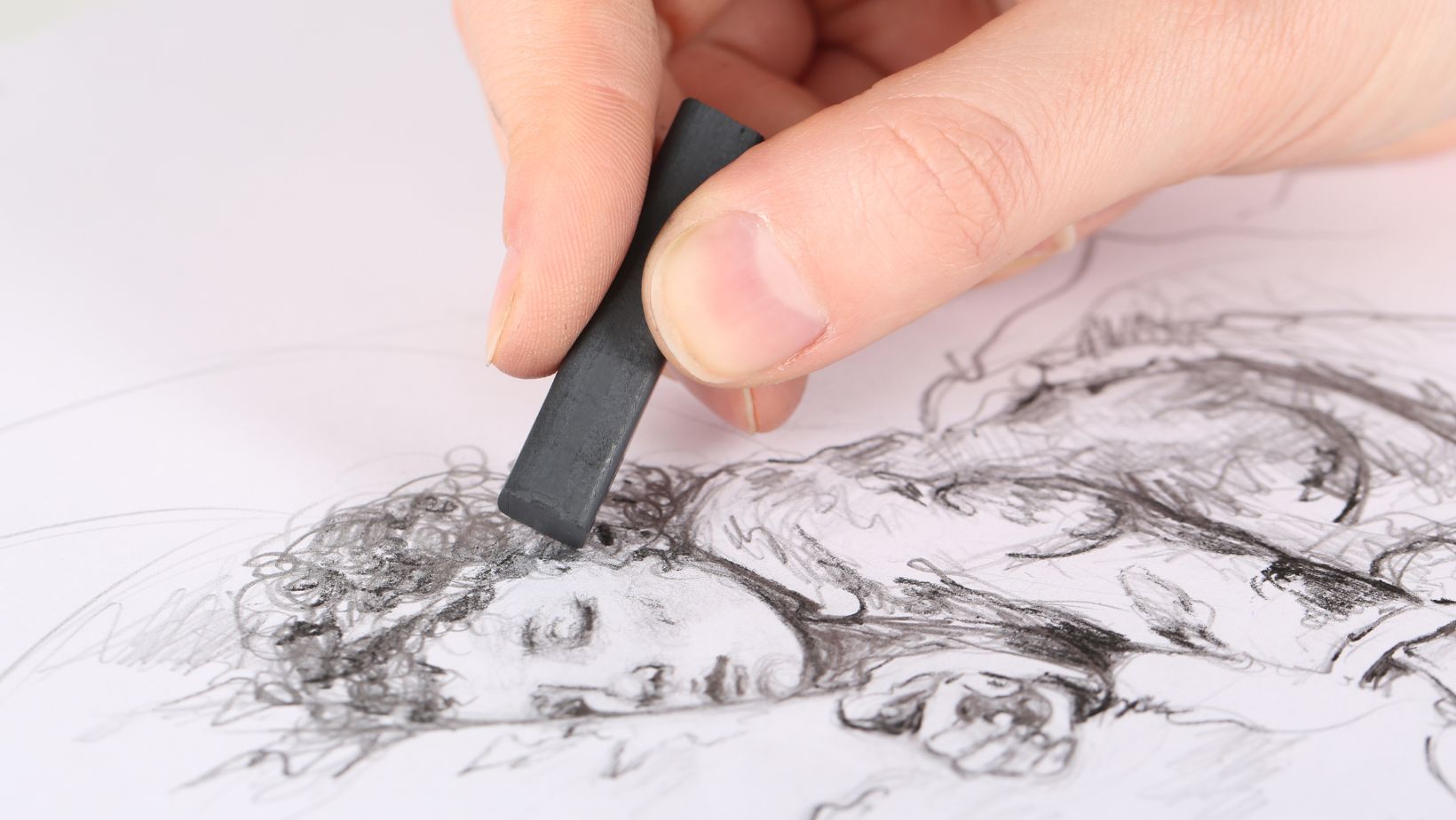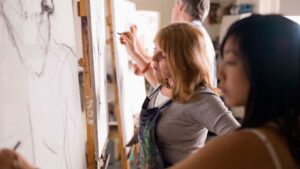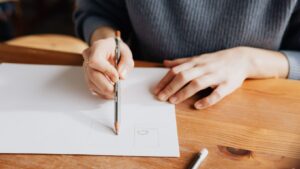
In the realm of art, the earliest stages of drawing hold a special significance. The process of putting pencil to paper, or brush to canvas, marks the genesis of creativity and expression.

These initial moments, where ideas take shape and lines begin to form, are where the magic of artistic creation unfolds. Exploring the roots of drawing unveils a rich tapestry of techniques and inspirations that have shaped the art world throughout history.
Understanding the foundational principles of drawing is essential for artists looking to hone their craft and develop their unique style. By delving into the earliest stages of drawing, one can grasp the fundamental building blocks that underpin all forms of visual art. From sketching rough outlines to refining intricate details, the journey of artistic creation begins with that first stroke of the pen. Join us as we unravel the mysteries of the earliest drawing processes and uncover the timeless techniques that continue to inspire artists today.
Proses Menggambar Yang Paling Awal Adalah
Exploring the origins of the drawing process offers valuable insights into the evolution of artistic expression. From the earliest cave paintings dating back thousands of years to the intricate sketches of Renaissance masters, the journey of drawing has shaped the course of human creativity.
- Primitive Markings:
The first known drawings by early humans on cave walls depict hunting scenes and daily life activities. These primitive markings laid the foundation for visual storytelling and communication through art. - Ancient Civilizations:
Civilizations such as the Egyptians and Greeks used drawing techniques to capture their beliefs, myths, and historical events. The precision and symbolism in their drawings reflect the cultural significance of artistic representation.

- Medieval Manuscripts:
In the medieval period, illuminated manuscripts showcased intricate drawings that intertwined religious narratives with decorative art. Scribes meticulously illustrated intricate details, blending creativity with religious devotion.
- Renaissance Realism:
The Renaissance era witnessed a revolution in drawing techniques, with artists like Leonardo da Vinci and Michelangelo advancing the principles of perspective, anatomy, and light/shadow. Their meticulous studies of the human form set new standards for realism in art. - Modern Innovations:
The advent of photography and digital art in the modern era transformed traditional drawing practices. Artists today combine traditional skills with digital tools to create innovative and evocative artworks that push the boundaries of visual expression.
By delving into the origins of the drawing process, artists gain a deeper appreciation for the rich history and diverse techniques that have shaped the art world. Understanding the roots of drawing provides a solid foundation for artists to experiment, innovate, and develop their unique artistic style.
Significance of Early Drawing Process
Exploring the beginnings of drawing unveils the essence of creativity and artistic expression. Understanding the foundational stages of drawing is crucial for artists aspiring to nurture their distinct style. From primitive cave drawings to intricate Renaissance sketches, tracing the origins of drawing emphasizes its pivotal role in shaping human creativity.

The progression of drawing from rudimentary markings through ancient civilizations to detailed medieval manuscripts and lifelike Renaissance art illustrates the profound cultural and artistic impact of this fundamental practice. Moreover, the transition of traditional drawing methods in response to modern advancements such as photography and digital art showcases how the art form continuously evolves, pushing the boundaries of visual representation.
By delving into the historical roots of drawing, artists gain a profound appreciation for its diverse techniques and rich heritage. This knowledge serves as a solid groundwork for artists to experiment, innovate, and refine their artistic styles. Understanding the significance of early drawing processes not only provides insight into the history of art but also empowers artists to forge new paths in the realm of visual expression.
Evolution of Drawing Techniques
Exploring the evolution of drawing techniques unveils a rich tapestry of artistic development through history. From the early stages of sketching basic outlines on cave walls to the intricate Renaissance renderings, the journey of drawing techniques mirrors humanity’s creative evolution.
Understanding the historical progression of drawing techniques provides artists with a valuable foundation to build upon. Ancient civilizations used rudimentary tools to etch images onto surfaces, gradually refining their methods to capture more intricate details and forms.

As civilizations flourished, artistic styles diversified, leading to the emergence of distinct drawing techniques across cultures. The Renaissance period marked a significant milestone in drawing, with artists like Leonardo da Vinci pioneering anatomical accuracy and perspective in their works.
The advent of photography and digital art in modern times revolutionized traditional drawing practices. Artists now have access to a plethora of tools and techniques to experiment with, blurring the lines between traditional and digital art.
By studying the evolution of drawing techniques, artists gain a deeper appreciation for the diverse approaches that have shaped the art form. Drawing on this rich heritage, they can innovate, experiment, and push the boundaries of visual expression to create truly unique and groundbreaking works of art.
Influence of Early Drawing Processes on Modern Art
Exploring the influence of early drawing processes on modern art reveals a profound connection between the past and the present. The evolution of drawing techniques, from primitive beginnings to sophisticated contemporary practices, has shaped the artistic landscape in significant ways.
- Evolution of Techniques:
- Emphasizing the importance of mastering foundational principles, artists throughout history have built upon the techniques of their predecessors to create distinct styles.
- Understanding the journey from simple cave drawings to elaborate Renaissance sketches provides a framework for contemporary artists to push the boundaries of creativity.
- Impact on Visual Expression:

- The transition from traditional drawing methods to modern innovations such as photography and digital art has expanded the avenues of visual expression.
- Artists today draw inspiration from historical drawing processes, infusing traditional elements with contemporary techniques to create unique and innovative artworks.
- Bridging Traditional and Digital Art:
- By acknowledging the heritage of drawing techniques, artists can bridge the gap between traditional and digital art forms.
- This integration allows for experimentation and innovation, enabling artists to create groundbreaking works that blend the essence of the past with the technologies of the present.
The interplay between early drawing processes and modern art underscores the continuity of artistic expression across time. As artists draw from the rich tapestry of historical techniques, they pave the way for new artistic horizons, blending tradition with innovation to shape the future of art.
Implications and Lessons for Contemporary Artists
Contemporary artists can derive valuable insights from studying the early drawing processes discussed earlier. By understanding the foundational principles and techniques used by ancient and classical artists, modern practitioners can enrich their own artistic practices.

- Incorporating Traditional Elements: Incorporating traditional drawing elements, such as line work and shading techniques, can add depth and character to contemporary artworks. By merging historical practices with modern styles, artists can create pieces that resonate with both the past and present.
- Exploring Innovative Techniques: While traditional drawing methods provide a strong foundation, contemporary artists can leverage technological advancements to push artistic boundaries. Experimenting with digital tools and mixed media enables artists to explore new creative avenues and produce visually stunning compositions.
- Fostering Individual Expression: Just as early artists used drawing as a means of personal expression, today’s artists can harness the power of drawing to convey their unique perspectives and emotions. By honing their technical skills and embracing experimentation, artists can cultivate their distinctive artistic voices.
- Embracing Creativity and Innovation: By studying the evolution of drawing practices throughout history, contemporary artists gain a deeper appreciation for the art form’s versatility and adaptability. This knowledge can inspire artists to think outside the box, innovate with their techniques, and push the boundaries of traditional art forms.
- Balancing Tradition and Modernity: Finding a balance between traditional drawing principles and modern artistic trends is key for contemporary artists. By recognizing the significance of historical drawing processes while embracing contemporary tools and methods, artists can create harmonious and impactful artworks that resonate with diverse audiences.

Understanding the roots of drawing is essential for artists seeking to forge their unique artistic paths. By drawing inspiration from early processes while embracing contemporary techniques, artists can create a fusion of tradition and innovation in their artworks. This blend allows for the preservation of artistic heritage while encouraging experimentation and creativity. Mastering foundational principles and exploring new horizons enable artists to craft impactful pieces that resonate with both the past and the future. Embracing the evolution of drawing, artists can navigate the complexities of the art world with a deep appreciation for history and a bold vision for what lies ahead.


